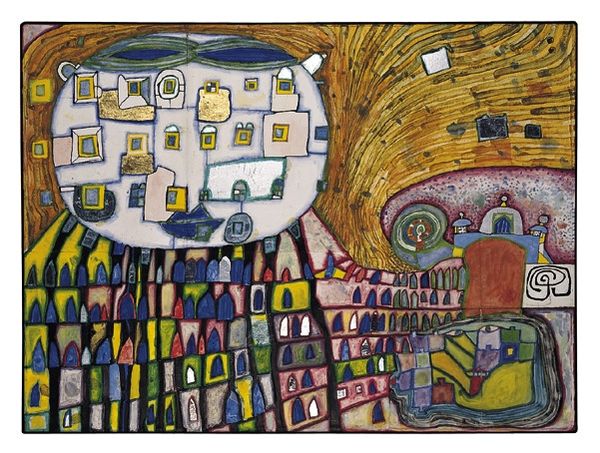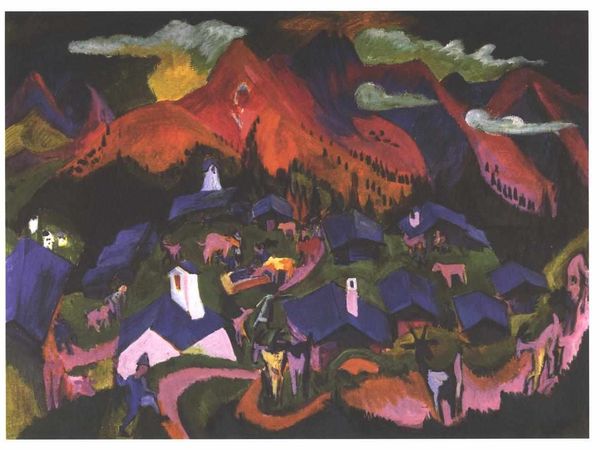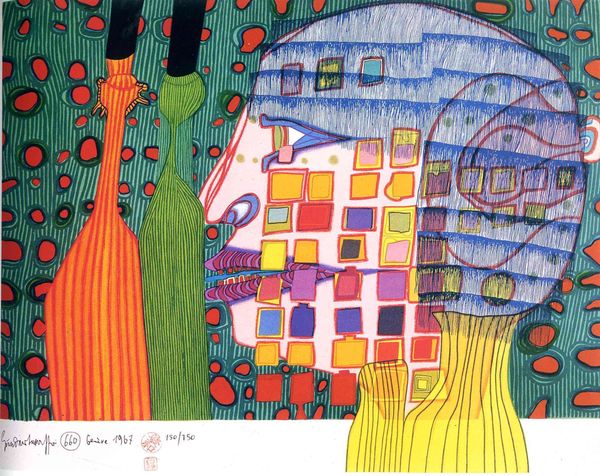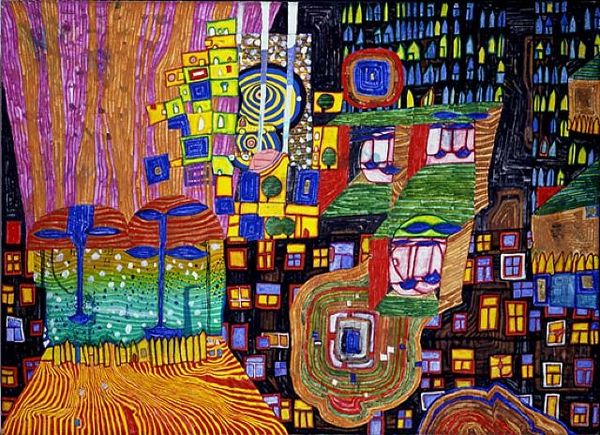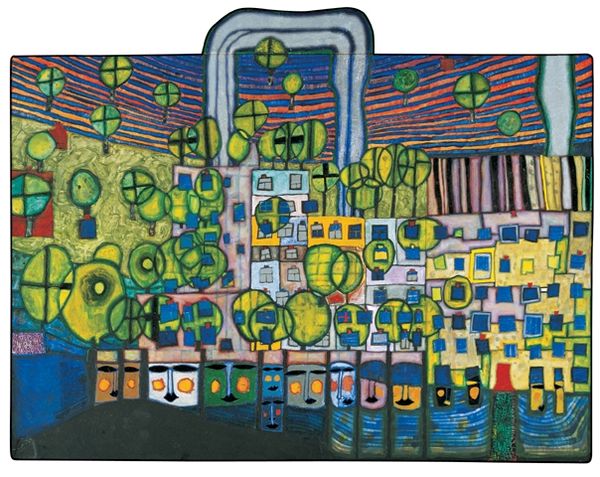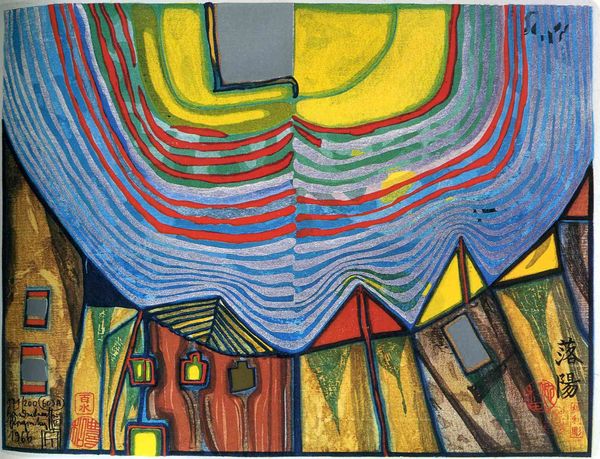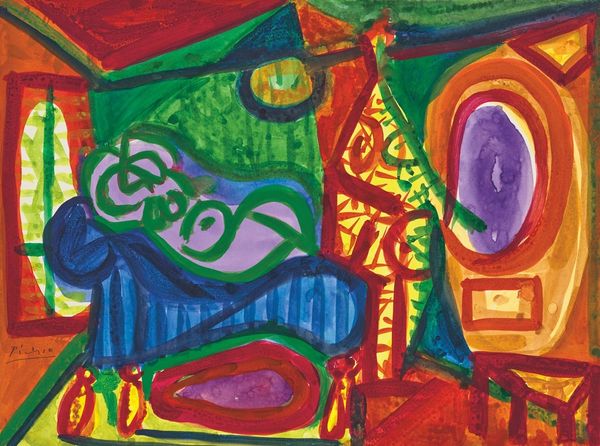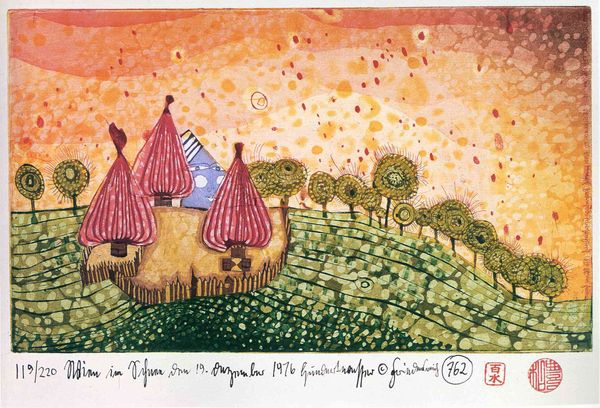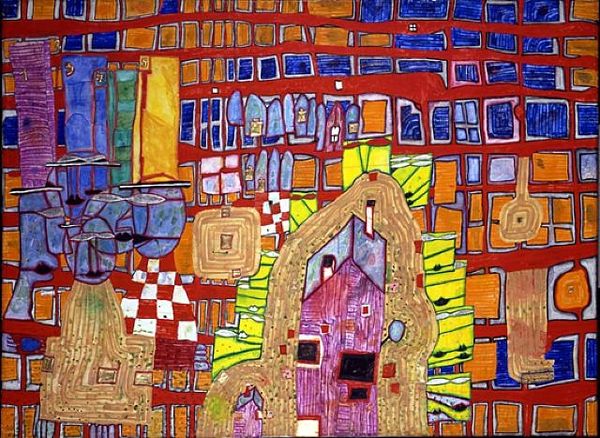
Copyright: NAMIDA AG, Glarus (displayed with the permission of Hundertwasser Non-Profit Foundation) The displayed work of art is protected under the copyright law. In particular, it is not permitted to reproduce, to alter, to print or to publish these works of art. Violations will be prosecuted according to civil and criminal law.
Curator: What strikes me immediately about this piece, Hundertwasser's "484A Houses in Rain of Blood" from 1961, is how geometric yet fluid it manages to be. It feels like an architectural blueprint rendered through a dream. Editor: It's certainly arresting. The use of these jagged, almost haphazardly drawn lines—they suggest a kind of frenetic energy. And the title... it introduces a sense of unease, doesn’t it? Considering this was painted shortly after the Second World War, I can’t help but read some post-war anxieties into the blood rain. Curator: Absolutely. Hundertwasser himself was very aware of the socio-political climate. The "rain of blood" could easily be a metaphor for the collective trauma, the moral decay that lingered after such devastation. Notice how these structures, these 'houses,' appear vulnerable, exposed, almost skeletal against that turbulent sky. Editor: Yes, and it’s a strange kind of vulnerability. The structures themselves are relatively simple, largely triangular forms. But within those forms, there's a proliferation of lines, colors, patterns. There's little sense of conventional perspective or depth. Do you see that the materiality of the house dissolves? They are barely there but somehow oppressive. Curator: Right, that's where Hundertwasser departs from conventional cityscapes. The piece challenges the idea of a city as a safe haven or a symbol of progress. These are homes, but they bleed—they’re porous to the surrounding anxieties. It reflects, perhaps, the artist's view on urban development as an encroachment on natural landscapes and individual expression. The swirling colours might stand in for human anxiety amidst the loss of nature in urban environments. Editor: It makes you wonder about the cultural influences here, beyond just the immediate postwar period. You can feel some hints of Art Nouveau perhaps. These patterns resemble designs of this movement with similar themes of growth and decay, similar feelings of vulnerability, and, most significantly, a deep understanding of nature. Curator: Precisely! It demonstrates how these visual forms of the modern landscape hold so much rich history—and also a message. For Hundertwasser, it would not have been enough just to produce something nice to look at but rather a cultural criticism using architecture, colours and geometries. Editor: I see it, especially knowing Hundertwasser’s focus on integrating organic shapes into architecture and, conversely, these angular structures within the natural world. It really is a haunting commentary on urban space. Curator: Indeed. An eerie reminder of the tensions inherent in modern existence.
Comments
No comments
Be the first to comment and join the conversation on the ultimate creative platform.
